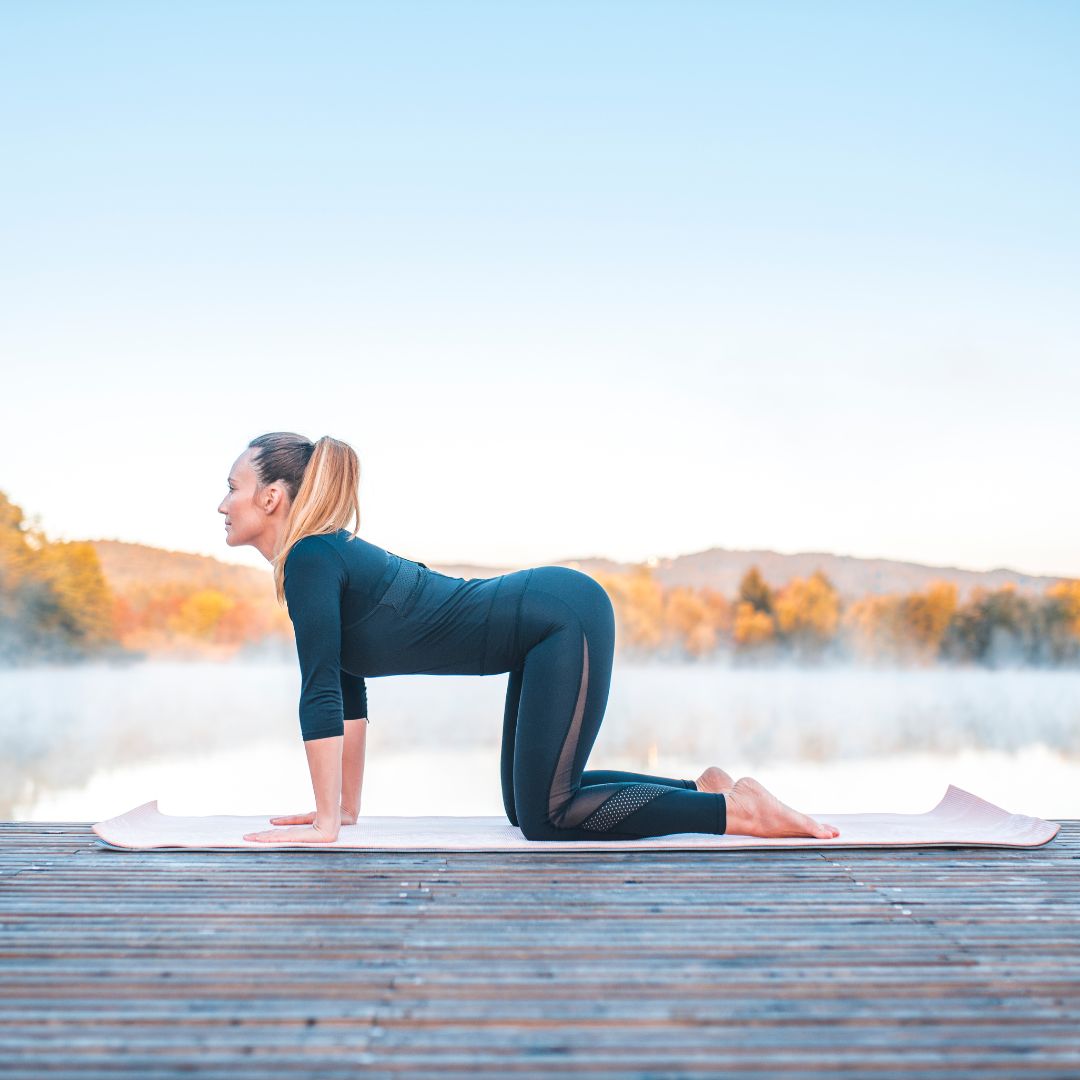3 Simple Moves for Pelvic Floor Health:
Child’s pose
One of my favorite beginner moves for pelvic floor health in learning to relax the pelvis. With this pose, you want to focus on breathing slowly into the back of the ribcage and imagine your sit bones (boney ends of the pelvis) separating gently on each inhale. This pose is a great opportunity to visualize the pelvic floor and its ability to move and stretch as we breathe.
Belly breathing
A foundational exercise for human movement and life, learning to breathe using your diaphragm instead of your chest can relieve pain and improve function in multiple areas. Using this type of breath is especially helpful in relaxing the pelvic floor muscles, supporting core strength, and increasing oxygen uptake. Place one hand on the chest and one on the belly – slowly and deeply inhale through the nose, working to expand the belly and keep the chest still. Exhale through the mouth and let the belly relax. Notice the pelvic floor move with the diaphragm as you go through this for about 1-2 minutes. add more pelvic floor relaxation by letting the knees fall to either side with feet together, or put the feet up onto a chair and push the lower back into the floor.
Cat cow
A commonly used posture, for good reason. The movements between flexion and extension of the spine help shorten and stretch the pelvic floor muscles respectively. When we incorporate our breath with these two movements, we also gain the up and down motion of the pelvic floor. Place your hands onto your mat so that the shoulders, elbows, and wrists are all stacked on top of each other. look to the knees to make sure they are also stacked under the hips (place a pillow or blanket under the knees if it feels uncomfortable). Start in a neutral spine position, then slowly drop the belly taking a deep inhale and gently looking toward the sky. Just take it to a position that feels natural and not any further. Then exhale through the mouth, while curving the spine and slowly dropping the head. Notice the way the pelvic floor feels throughout the movement, and go slowly.
During times of stress and anxiety, we surely notice that our physical body feels it too. In fact, it doesn’t only feel it, but it can be affected by it too. And the more frequent our stress and anxiety is, the more chronic these physical manifestations can become. These manifestations can look different for every single person. It can be a headache, a muscle knot, clenching teeth, a stomach ache. We want to be able to notice these things in our body and how to support it on a regular basis. One of the most overlooked areas to support in times of stress is the pelvic floor. It is often acknowledged for our pre and postnatal people, but pelvic floor health is for absolutely every single person. When we think of the pelvic floor, the next thought is commonly… strengthen. kegels. stop peeing while laughing.
These things can all be helpful and important in the journey of taking care of our pelvic floor muscles, but in relation to the physical manifestations of stress we also need be comfortable with the opposite….relax. lengthen. release.
The above moves can begin to relax our pelvic floor today; and in turn, relax our mind. A few minutes a day can make significant improvements. Work on it for a week and see how you feel.





